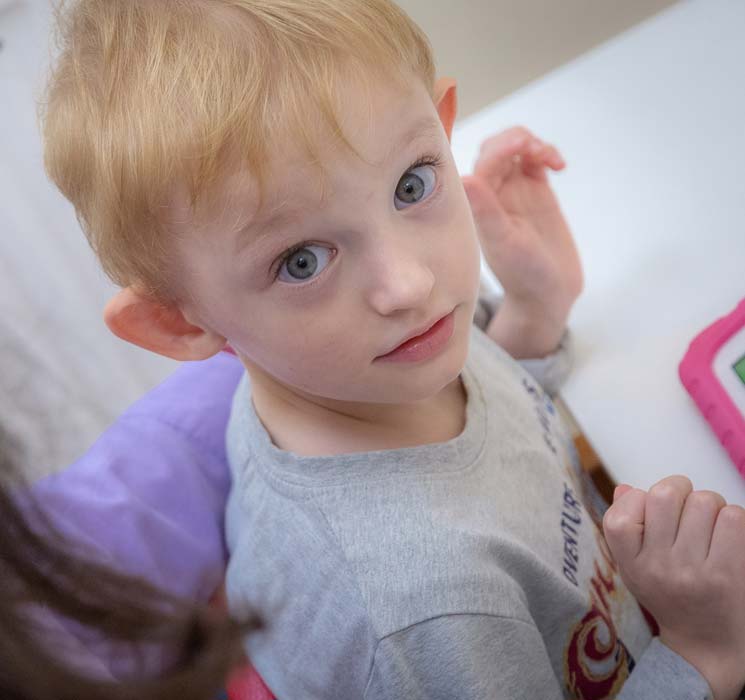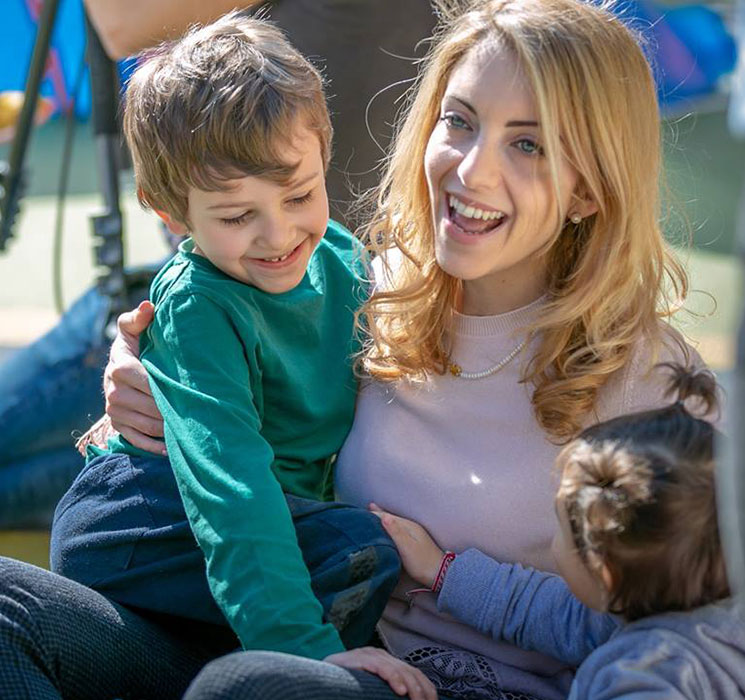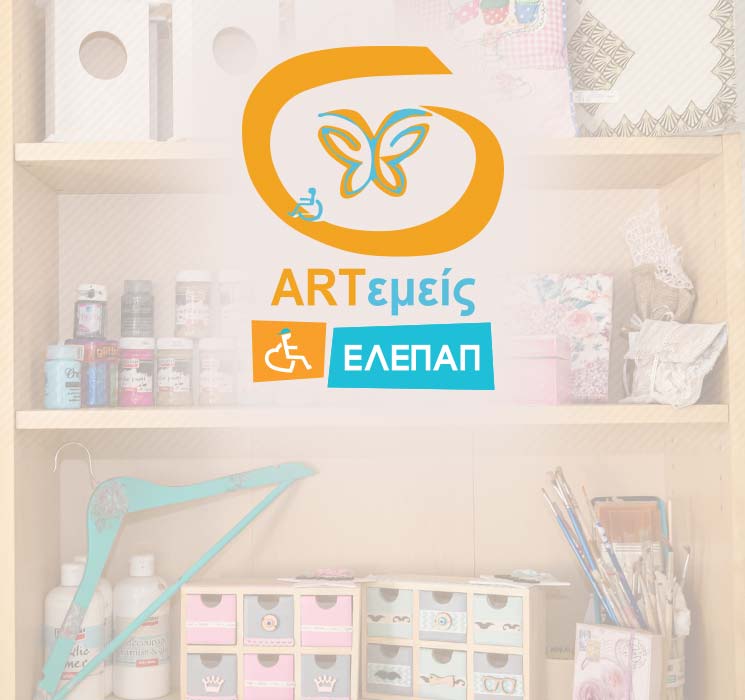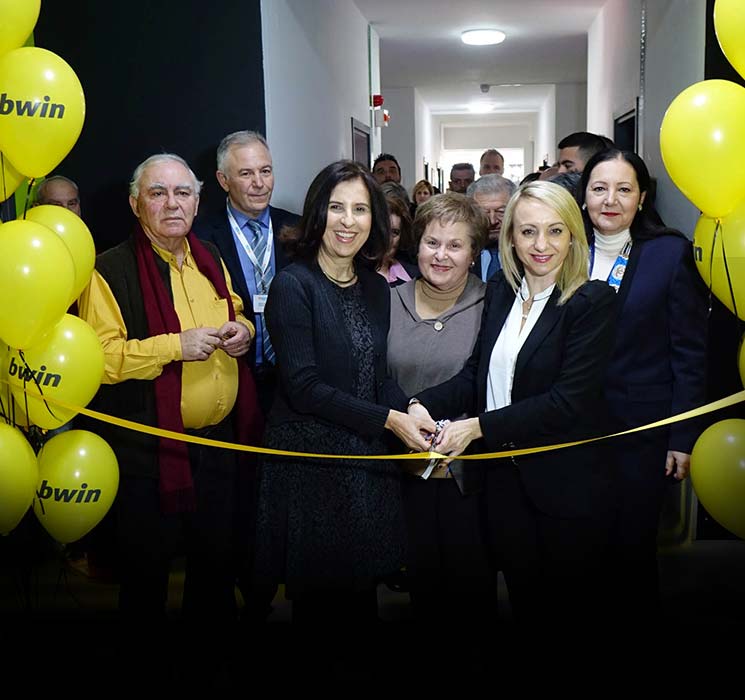Physiotherapy
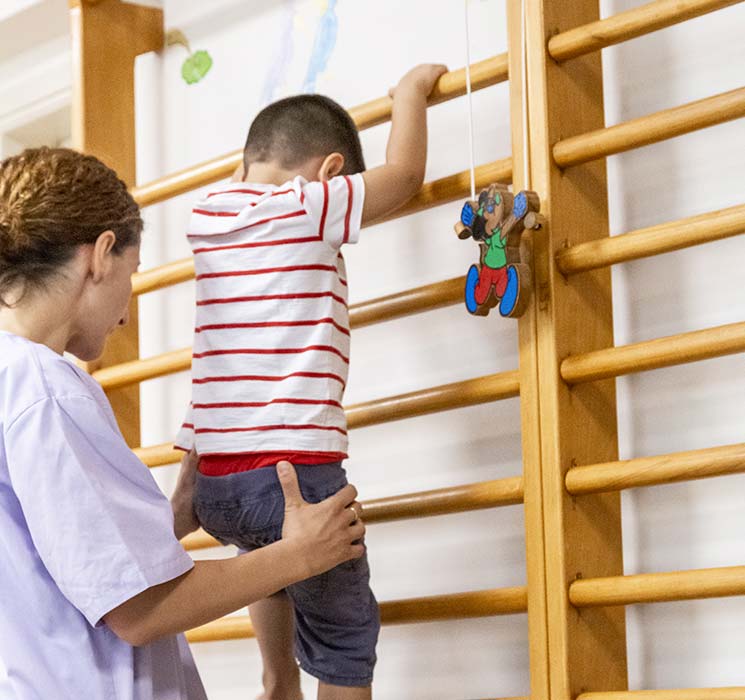
Physiotherapy plays a major role in infant and child rehabilitation.
The goal of physiotherapy is to improve the infant’s or child’s ability to move and function in the best possible manner. We intervene by trying to change the child’s positions and movements. By changing the muscle tone, we help the child adopt natural movements.
Our infant/child may for example experience:
- Spasticity: in which case we try to relax the muscle tone through special manipulations and various aids.
- Hypotonia: whereupon we try to increase the muscle tone
The development of every child is monitored through a physiotherapy assessment and video-recordings are made of all cases on a regular basis.
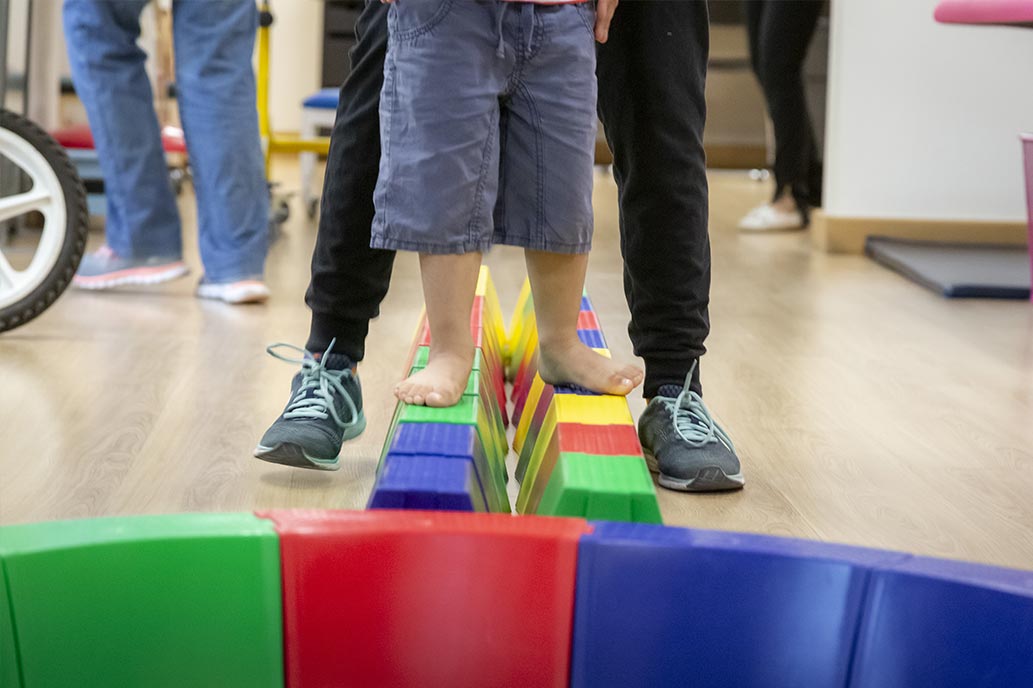
The child is treated with respect and understanding. A personalized physiotherapy plan is developed that takes into account the child’s needs and goals.
Physiotherapy
- Increases participation, motor development and function
- Improves strength and resilience
- Promotes learning opportunities
- Improves the quality of life
- Promotes the child’s independence
The majority of ELEPAP’s infants and children achieve effective rehabilitation thanks to:
- the dynamic participation of parents
- the scientific qualifications of our physiotherapists
- the collaboration of all the medical-therapy departments
- our great love for the children
A harmonious therapist-child- parent relationship greatly promotes the continuous cooperation and education of parents who can follow instructions and also carry out the appropriate therapy at home.
- BOBATH approach- neurodevelopmental treatment (NDT)
- T – BABY
- VOJTA method (reflex locomotion)
- PNF method (Proprioceptive Neuromuscular Facilitation)
- Sensory Integration
- Electrotherapy (applied mainly in obstetrical paralyses and biofeedback)
- Rehabilitation through Functional Physiotherapy helps children achieve their maximum potential in terms of functional independence and maintain the optimal level of functioning, activity and interaction with their surroundings.
- Functional Physiotherapy focuses on the acquisition of useful and relevant motor skills.

This intervention:
- Enhances functional execution
- Helps determine transition periods
- Helps determine and change basic and primary limitations
- Provides opportunities to exercise
The therapist adapts or adjusts the activity or the child’s surroundings while focusing on the execution of the activity rather than on the quality of the movement. The objectives of this treatment are measurable and are the result of daily activities. The aim is the child’s improvement and social participation. Parents and children participate actively at every stage (setting of objectives, decision making, daily application, evaluating the objectives).
Advantages of the therapy:
- Active involvement of child and family
- Focus on the child’s level of ability
- Promotion of functional improvement
- Realistic view of the child’s potential in terms of daily functioning
- Promotion of parents’ self-confidence-reduction of parenting stress
- Intervention that takes place in the child’s physical surroundings.
Physiotherapy interventions
Physiotherapists apply their expertise using clinical reasoning and reflection in order to plan interventions relating not only to the physical structures and functions, but equally to the child’s activities and active social participation. They promote the children’s active participation at home, at the school as well as in their community.
Physiotherapy now uses modern, reliable tools:
- Classification- GMFCS (GROSS MOTOR FUNCTION CLASSIFICATION SYSTEΜ)
- Official/calibrated assessment - GMFM -88, PEDI, GAS
ICF
ELEPAP has integrated the ICF-CY into its clinical practice. The ICF model’s greatest value is that it focuses beyond the “rehabilitation of primary damage” and considers equally important objectives for the promotion of functional activation and the facilitation of the child’s full participation in every aspect of life.
This mindset does not underestimate the role and the importance of “deficit-based interventions” such as:
- Conquering motor stages (developmental milestones) which are of major importance to the child’s development.
- Independent walking training as well as training for more difficult motor skills such as running or going up or down the stairs.
- Assessing the need to use special adjustments and aids, as well as orthotic devices to improve movement and maximize independence.
Emphasis is therefore placed on recognizing that interventions using any (or maybe all) of the ICF model’s components may be important, appropriate and interrelated.
“Personal Factors”
The ICF –CY model formally recognizes the contribution of “personal factors”, accepting the importance of the child’s personal preferences, interests, likes and dislikes and taking them into account in the therapy plan. The child’s “activity” and “participation” becomes part of the program.
In this sense, the model requires the therapist to accept deviations and differences and to celebrate the achievement of self- set objectives which can be best achieved in the best possible manner, based on the special and unique range of skills and limitations of each individual.
This approach is contrary to the traditional interventions where “normal” (whatever the term means) is the standard against which functioning is measured.
Family
Our physiotherapists recognize the importance of the family in the child’s functioning and the integration of families in decision making and the setting of meaningful goals according to the Goal Attainment Scaling (GAS) is a priority for them.
This brings about better functional benefits with less effort than through the impairment-based interventions.
- Occupational therapy
- Aquatic therapy
- Speech therapy
- Therapeutic riding
- Biofeedback
- Music therapy
- Sensory Integration
- Assistive Technology A/T


